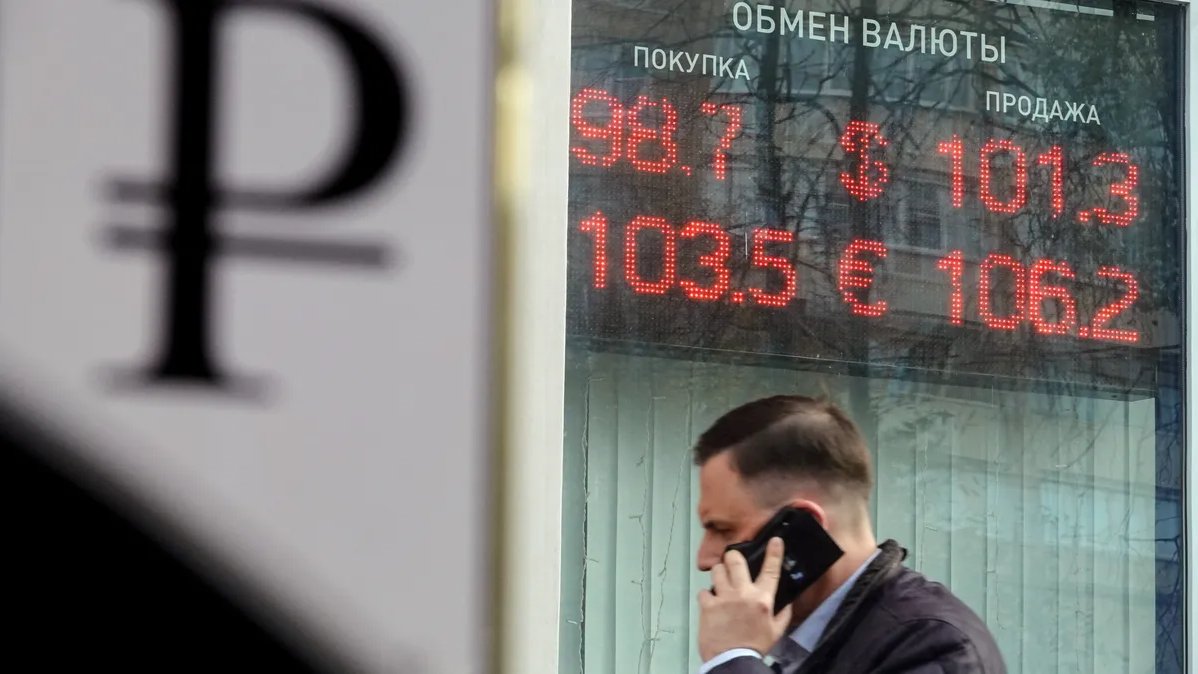The Kremlin is yet again being forced to take drastic measures to prop up the plummeting value of the Russian ruble. A presidential decree signed on 11 October required the country’s major exporters to convert their foreign revenue into rubles to help prop the currency up, even as the Kremlin spokesperson dismissed concerns about the exchange rate. What’s behind the ruble’s continued fall against the dollar and what implications might it have?
In August, the Russian ruble passed the psychological barrier of 100 to the dollar for the first time since the economic fallout following the invasion of Ukraine, prompting Russia’s Central Bank to introduce emergency measures that included a hike of the interest rate from 8.5% to 12%, and then again to 13% in September.
This only managed to keep the value of the dollar under the 100-ruble benchmark for less than two months, however, with the ruble depreciating again on 9 October to this year’s record low to date of 102 rubles to the dollar.
In an effort to stabilise the exchange rate, Russian President Vladimir Putin signed a decree compelling exporters to convert their foreign currency revenue into rubles. The requirement applies to 43 companies in the energy, chemical, timber, metal and agricultural industries, though a full list of those liable has not been made public.
One week after the decree came into force, the ruble settled at around 97–98 to the dollar. However, most economists see this as a temporary fix.
“This decision is more about politics than economics,”
Ruben Enikolopov, an economist and professor at Spain’s Pompeu Fabra University, told Novaya-Europe, adding that it would “have some effect, but not for long”.
Following the ruble’s crash to 120 per dollar in the immediate aftermath of Russia’s invasion of Ukraine, the government imposed similar measures. But the state of the market was very different then, with reduced imports and rising export revenue keeping the ruble afloat. Now the situation is the reverse: imports are on the rise, while oil and gas exports dropped by 34% in the first nine months of this year.
The cost of war
While the ruble’s fragility has been attributed by economists to an array of factors including Russia’s diminishing export revenues and increased business lending, Enikopolov maintains that the country’s war-related budget deficit is the primary driver of the ruble’s devaluation.
In an effort to cover the massive financial cost of the war, Russia has been depleting its foreign reserves and therefore increasing its national debt. This in turn has strained the financial system and led to an erosion of confidence in the national currency.
Another explanation points to the “quality of export earnings”. Due to the transition to paying for Russian exports in rubles, Indian rupees and other national currencies, the flow of hard currencies such as the euro or dollar into Russia has decreased.
The transition to national currencies is partly a forced step in an attempt to avoid sanctions, Enikolopov notes. As a result, hard currencies are increasingly scarce in Russia, while there is an oversupply of rubles both domestically and internationally, and the overall volume of trade on the Russian stock exchange has been reduced. This has led to volatility, when, for instance, a large transaction on the stock exchange can force rates to swing sharply in one direction, economists say.
The path to inflation
Most Russians have directly experienced the effects of the weakening ruble in the increasing prices for products. Since the start of 2023, the ruble has lost a third of its value, ranking it as one of the weakest currencies in the world alongside the Argentinian peso and the Turkish lira. Despite this, the Russian authorities have repeatedly insisted that Russians have nothing to worry about.
Kremlin spokesperson Dmitry Peskov has dismissed concerns about the flailing ruble, calling the focus on the dollar-ruble exchange rate a “thing of the past” and even suggesting it was a product of emotional attachment. “People should adapt to living in the ruble zone and not feel [dependent] on the dollar,” he urged.
While Peskov may not think so, the ruble-dollar exchange rate does have a tangible impact on ordinary Russians. A study by the Central Bank of Russia shows a direct correlation between the ruble’s decline and increasing prices for imported goods. Since imports make up roughly 35% of Russian consumer spending, inflation is occurring proportionally to the ruble’s depreciation. Sanctions, as well as supply and workforce shortages, are also quickening the pace of inflation.
The effects of the ruble’s devaluation are also evident in the diminishing purchasing power Russian salaries provide. For example, the average Russian salary in dollars is now $770 per month, the same as it was in 2021, despite actually increasing by a third in rubles over the same period.
Join us in rebuilding Novaya Gazeta Europe
The Russian government has banned independent media. We were forced to leave our country in order to keep doing our job, telling our readers about what is going on Russia, Ukraine and Europe.
We will continue fighting against warfare and dictatorship. We believe that freedom of speech is the most efficient antidote against tyranny. Support us financially to help us fight for peace and freedom.
By clicking the Support button, you agree to the processing of your personal data.
To cancel a regular donation, please write to [email protected]

